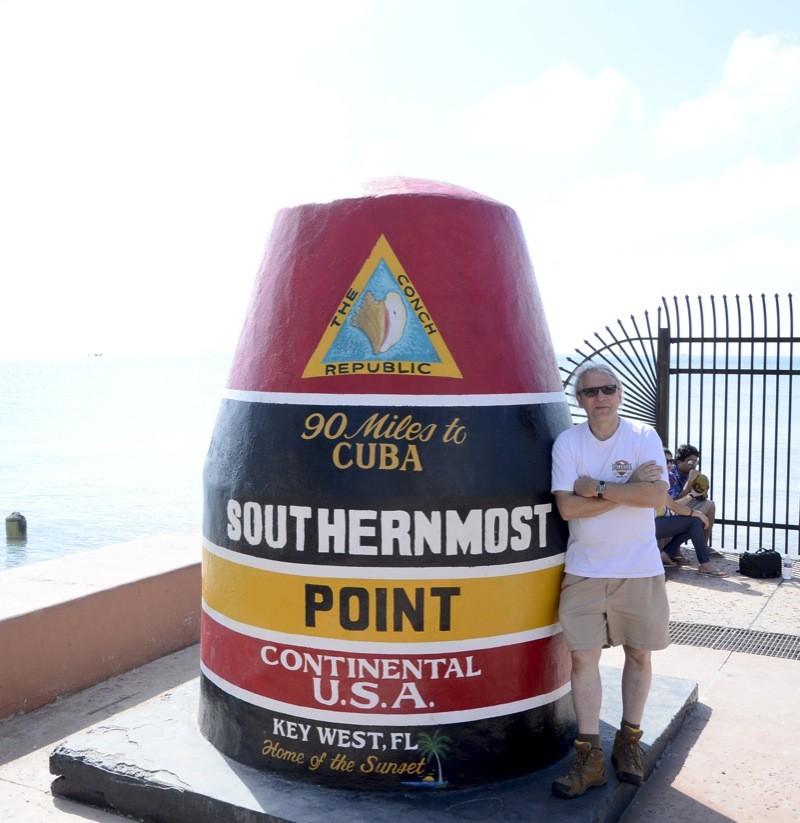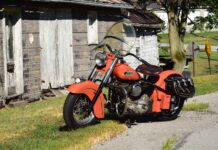Cayo Hueso, Fla.—Daytona Bike Week and you’re probably saying, “Been there, done that,” but damn it’s March and I want to ride! Obviously, the farther south you go the warmer the weather and, after suffering through another northern winter, the idea of riding as far south as possible has considerable appeal. Daytona Beach is a good place to say goodbye to winter, and Miami Beach is even better, but there’s another 127 miles of cruising to be had south of Miami before running out of pavement on Cayo Hueso, the Island of Bones.
The Overseas Highway, U.S. Route 1, connects “the Keys” like beads strung on a thread, a necklace spaced by 43 bridges. There’s no other stretch of pavement like it, but sometimes the 100-mile conga line of traffic diminishes what otherwise would be one of the great motorcycle roads in America and I wouldn’t want to ride it when there are high winds.
U.S Route 1 ends at mile 0. While this is not the westernmost island, it’s as far as the highway goes. The word “key” is actually the Spanish word “cayo” for a low-lying island. Ponce de Leon, of fountain-of-youth fame, discovered Cayo Hueso in 1513 and the imaginative Spaniard named it for the proliferation of human bones discovered here: the Spanish name is pronounced Key Wes.

Because he had the right of way.
There’s no fountain of magic water on the island—in fact, water is piped in from Florida City 120 miles away—but there’s still plenty to drink. Moto-Foodie’s excuse for visiting was to research Key lime pie and margaritas with a bit of the local culinary scene thrown in to balance sugar and alcohol intake.
After checking into Author’s House (where else would a writer stay?) my girlfriend and I met up with Spooky Dave (a.k.a. David Sloan) at the acclaimed tequila bar, Agave 308. Mixologist Jules set me up with her signature Basil-Citrus Splash, a margarita made with fresh basil and orange that’s muddled in a mortar and pestle, then combined with fresh lime juice, agave nectar and Allegro Reposado tequila. Most bars feature signature margaritas and stock premium tequilas that I’ve never even heard about, while acute competition keeps quality high and prices reasonable.
Dave is a local historian, ghost hunter, author and producer of the Key Lime Festival. Jules brought us a slice of local pie accompanied by a shot of Milagro Silver tequila while we sat and discussed his book, The Key West Key Lime Pie Cookbook. Dave had me repeatedly puncture the pie with a fork and then poured the tequila over the pie allowing it to soak into the holes. Whipped cream is the most common topping and the classic pie has none whatsoever, but I must admit that tequila might be the best.
It was the first thing in the morning and already a long line of people were waiting to have their picture taken next to the southernmost point marker. Motorcycles cruised by, but there wasn’t a place to park and Jersey barriers made it impossible for bikes to even approach the marker.

The Key West lighthouse is several blocks from the beach; a victim of extensive landfill used to expand the footprint of the island. Across the street, the Hemingway House was once beachfront property. Now owned by a trust and open to the public it is home to generations of polydactyl cats descended from Ernest Hemingway’s pets. Two more blocks led to a café, the Six Toed Cat, where a breakfast of eggs Benedict on top of blackened yellow snapper with a Key lime Hollandaise sauce fortified me for further adventures.
Rich in taste, Key limes, Citrus aurantifolia, are not the same as the Persian limes, Citrus latifolia, usually purchased in the grocery store. Columbus brought this citrus to the New World and it was commercially grown in Florida decades before the Persian hybrid arrived in 1883. Unfortunately, the 1935 hurricane destroyed the orchards and these days, limes are flown in from Mexico—with the tequila, I suspect.

Kermit is the King of Key Lime and dresses in fluorescent green, but his pies will never be this color: authentic Key lime pie is a sickly yellow. The very essence of authentic Key lime pie is a hotly debated subject—usually over beer or margaritas—and the winner of the annual competition, held during the Key Lime Festival, accrues bragging rights as big as those for chili or barbecue in other regions. Kermit has developed an additional 149 products using Key lime, but we simply didn’t have time to test more than a few.
Cuba is only 90 miles south of Key West and in 1978 the mayor actually water-skied to Havana. Obviously, the Cuban influence is deeply rooted here. We eased between couples dancing to live salsa music and entered the culturally infused El Maison de Pepe to sit down with chef David. Beginning with conch fritters and a bowl of chili accompanied by Hatuey beer we moved on to plates of traditional comfort food: lechon asado; ropa vieja and picadillo habanero. I passed on the offer of a hand-rolled after-supper cigar.
Conches are giant sea snails and the meat is prepared in numerous ways, most notably as cracked conch soup and conch fritters: deep-fried balls of chopped conch mixed with flour, onion, pepper and spices. Most restaurants serve conch and there are even a couple of fast-food stands that specialize in this delicacy, but the best were found at the Half Shell Raw Bar.
The availability of fresh—i.e. caught just hours ago—fish makes this one of the best places in the U.S. to dine on seafood. At the Half Shell Raw Bar they typically go through 500 pounds of fresh-shucked oysters each day during happy hour. After sampling conch fritters and a fantastic cracked-conch soup, I wandered over to a nearby table while chef Tony baked a coconut-encrusted grouper fillet for my supper. Three guys from Myrtle Beach had gone on an afternoon fishing charter and were celebrating. The restaurant prepared their catch of tuna and Mahi Mahi; the pepper-encrusted, slightly seared tuna that had been swimming three hours earlier was the most delicious I’d ever eaten.
This is a quirky place. Feral chickens roam the sidewalks and cafes. The trees are filled with iguanas. Watching the sunset is still a big deal. It’s one of the most haunted places in the country. Record temperatures have never sunk below 41 degrees or risen above 97 degrees. It feels like the offspring of New Orleans and Provincetown where I grew up as a hippie. I loved the vibes… and the temperature.
One can drink only so many signature margaritas, sample only a certain amount of pie, and eat at too few restaurants during a three-day visit. We watched the sunset from Mallory Square and, better yet, on a champagne sunset cruise aboard the schooner America II. A delightful couple of hours were spent with Fury Adventures snorkeling on reefs teeming with fish. The USS Maine memorial in the cemetery was a discovery and Dave led us on an intriguing ghost-hunting expedition. Three weeks wouldn’t have been sufficient time to explore all this island has to offer, but we had to pack and head north up the highway—our plane was waiting in Miami.























Loved your experience, thanks for sharing.